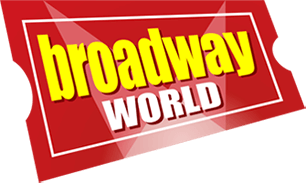MOA's NUXALK STRONG Showcases Indigenous Sovereignty And Reclamation
Exhibition highlights the reawakening of the Pacific Central Northwest Coast Nation's cultural practices and family belongings.

The Museum of Anthropology (MOA) at UBC will present the world premiere of Nuxalk Strong: Dancing Down the Eyelashes of the Sun, on display at MOA from February 21, 2025–January 5, 2026.
Co-curated by Dr. Snxakila—Clyde Tallio, Director of Culture and Language, Nuxalk Nation, and Dr. Jennifer Kramer, Curator, Pacific Northwest at MOA, this first-of-its-kind exhibition will be dedicated to showcasing the rich culture and worldview of the Nuxalk Nation, located in Bella Coola, B.C.
The exhibition will present contemporary Nuxalk actions, rooted in ancestral rights and responsibilities, to strengthen and create robust futures for its community, including the revitalization of Nuxalk language, self-governance, stewardship, and ceremonial practices. Featuring treasures and artworks housed at MOA, and loans from six participating museums and private collections, Nuxalk Strong will highlight the strength and healing of the Nuxalk Nation following colonization, and how the community is now working with museums to support its efforts to safeguard belongings, treasures and ceremonies for future generations.
“Nuxalk Strong demonstrates the foresight of our Elders who strategically placed our treasures in museums for safekeeping at a time when our culture and language were being oppressed and we were forced to confine to colonial ways. In Nuxalk, this is known as putl'altnick – thinking and planning for those not yet born,” says Dr. Snxakila Clyde Tallio, co-curator of the exhibition. “Today, as our community works to rebuild our sovereignty, sustainable relations, and cultural traditions, we are also working towards reclaiming the masks, regalia, weavings, and carvings for the living generations to restore the knowledge and reveal the values found within these treasures.”
Adds Dr. Jennifer Kramer: “Nuxalk Strong offers an opportunity for Vancouver audiences to examine the role that institutions have historically played in removing and retaining Indigenous belongings far from their ancestral homes. This exhibition demonstrates how museums can participate in nuyayanlh – generous reciprocity by aiding and supporting the Nuxalk as they reclaim their sovereignty through reconnecting to their treasures.”
Nuxalk Strong will feature 71 treasures, many on loan from the Royal British Columbia Museum (Victoria), Burke Museum (Seattle), Glenbow Museum (Calgary), Manitoba Museum (Winnipeg), Museum of Vancouver, private collections, and from Nuxalk families. Highlighted items on display will include masks representing Syut – supernatural beings; yatn – raven rattles; and yakyanlh – mountain goat wool robes, including the yakyanlh that belonged to Tallio-Hans recently located in Alberta after being severed from the community 40 years ago; as well as examples of ceremonial items held within a family's box of treasures, such as a ringed cedar bark potlatch hat and talking stick.
As part of the exhibition's commitment to repatriation, there will be a significant collection of Nuxalk masks, regalia, and cedar bark weavings returned to the community at the close of the exhibition in 2026. These items were originally gifted to ethnographer TF McIlwraith when he worked with the Nuxalk in the early 1920s. McIlwraith's descendants will return these physical treasures – as well as Nuxalk names that were ceremonially given to their father/grandfather – to the community, showcasing an important display of reconciliation in action.
The Nuxalk Nation have lived for more than 14,000 years on the central Northwest Coast. They are recognized globally for their distinct aesthetic and unique style of painting, carving and weaving, as well as the radiant colour of blue used on their masks and ceremonial regalia. These historic treasures materialize sovereign rights and responsibilities to steward the lands and waters and continue to inspire contemporary Nuxalk artists to once again tell the Smayusta – ancestral family origin stories.
Co-curators Tallio and Kramer first met in 2008, when Tallio came to review the Nuxalk treasures at MOA. Kramer had previously spent time in Bella Coola learning from Nuxalk artists and volunteered at the Nuxalk-run Acwsalcta School, which informed her PhD in cultural anthropology from Columbia University in 2003. Tallio is a fluent Nuxalk speaker and has dedicated the past 20 years to the revitalization of Nuxalk culture, language, and ceremonies. As Cultural Director of the Nuxalk Nation, he is managing the development of the Nation's first Big House in more than 100 years. Nuxalk Strong is the first exhibition that Tallio and Kramer have curated together.
MOA will celebrate Nuxalk Strong's opening night on Thursday, February 20, 2025, from 6 to 9pm, with free museum admission for all. To learn more about the exhibition, visit moa.ubc.ca
Comments
Videos

